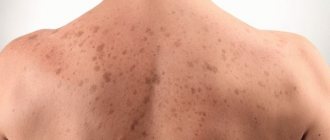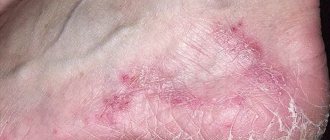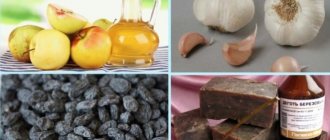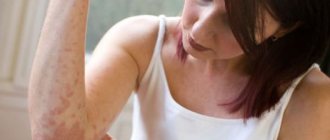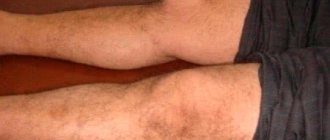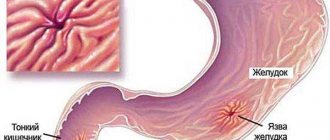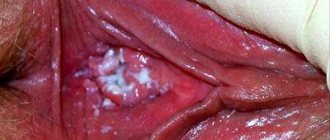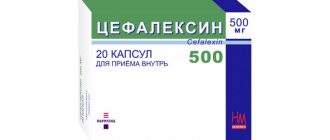- Common signs of lichen in humans
- Pityriasis rosea
- Ringworm in humans
- Pityriasis versicolor
- Devergie's disease
- Herpes zoster in humans
- Psoriasis
- Ringworm
Ringworm is a skin disease caused by viruses or fungi. It is transmitted from humans or animals by contact. However, this does not always happen. Scientists have not yet reached a consensus on why some people are susceptible to infection, while others remain healthy even after close contact with an infected or sick person.
Despite this, the characteristic features of this group of diseases and their treatment methods are very well known.
Ringworm is not a disease, but a group of diseases caused by different pathogens, but united by a common name.
According to dermatologists, the most susceptible to infection are:
- Persons with weakened immune systems.
- People who have been under stress for a long time.
- Having a hereditary predisposition (this opinion is not shared by all dermatologists).
- Patients taking certain allergy medications.
- People who are often exposed to hypothermia or colds.
- Persons from 30 to 70 years old (this opinion is also not shared by all dermatologists).
- All patients whose internal organs are not working properly.
Despite the fact that each type of disease has its own origin and its own characteristics of the course, it is possible to identify symptoms that are common to all types of infection.
What kind of disease is lichen?
Ringworm is a term that unites a whole group of dermatological diseases, which are often caused by a fungal or viral infection. Ringworm is accompanied by severe itching, inflammation of the skin and rash.
A weakened immune system makes a person susceptible to fungi and viruses; this is one of the common causes of illness. However, dermatological diseases are not always infectious in nature, but can be a consequence of stress or an allergic reaction.
Treatment methods depend on the symptoms and type of disease.
In order to answer the question “How to cure lichen in an adult?” it is necessary to understand which pathogen caused the disease.
Prevention
There are a number of measures that will help avoid the disease:
- avoiding contact with infected people and animals;
- observe the rules of personal hygiene;
- use only your personal items;
- do not overcool and try to avoid stress;
- strengthen your immune system.
By following all these rules, you can avoid the formation of lichen on your hands.
Types of lichen
Types of lichen that affect humans include:
- Pityriasis rosea or Zhiber's pityriasis;
- Ringworm;
- Pityriasis versicolor or versicolor;
- Shingles;
- Lichen planus;
- Ringworm;
- Squamous lichen;
- Sun lichen;
- Lichen alba;
- Tubular lichen;
- Asbestos lichen;
- Piedra or lichen nodosum.
Let's take a closer look at the types of lichen and how it spreads.
Pityriasis rosea
Characteristics:
- The main symptom is a round and oval rash, mostly pink;
- Pityriasis rosea is localized mainly on the back , abdomen, thighs and sides;
- The spread of spots begins with the appearance of one rather large “plaque” , after which the rash begins to “spread” quite quickly;
- May be accompanied by fever , general malaise and inflammation of the lymph nodes;
- Infection occurs after contact with a sick animal, in a pool or sauna, or when using someone else's personal hygiene products and clothing.
Ringworm
One of the most common types of disease.
There are two forms of the disease:
- Microsporia - the skin and hair areas are affected, and the nail plate may suffer. When the skin becomes infected, round red spots appear with signs of peeling. On the scalp it manifests itself as hair loss and brittleness. The nail plate affected by the fungus is characterized by dull white circles;
- Trichophytosis - round and oval spots form on the skin with a clearly defined contour of bubbles and nodules. In the center of the spot affected by the fungus there is an area with pityriasis-like peeling. If trichophytosis is localized in the hairline area, partial hair loss and the formation of grayish-white scales occur.
Infection with pathogenic fungi occurs through contact of a healthy person with a sick person, as well as through contact with a sick animal.
Pityriasis versicolor
Characteristic features of pityriasis versicolor or versicolor:
- Symptoms of the disease are round spots ;
- The development of the disease begins with the appearance of a “plaque” formed on the patient’s body or neck, after which the rash further spreads;
- There are no pain symptoms , itching or peeling;
- The disease is not believed to be transmitted from person to person. However, in families where the structure of the skin is genetically similar, inheritance of the fungus is possible.
Shingles
Characteristics:
- The first symptoms are fever , itching, burning, nausea and vomiting;
- Further characteristic is the appearance of a pale pink rash with poorly defined boundaries;
- As the disease progresses, with clear liquid appear
- The virus is extremely contagious and you can get sick through normal household contact.
Lichen planus
Characteristics:
- The disease manifests itself in the form of bright red rasheslocalized on the mucous membranes, skin and nail plates;
- Most often, the rash affects the face , ankle and mouth;
- The body is covered with papules - small pimples that reach a diameter of about 1-2 mm, which are distinguished by a clear edging, dense texture and retraction of the central area;
- The nail plates become cloudy and are covered with longitudinal stripes;
- It is a non-communicable disease . A sick person is not contagious.
Ringworm or eczema
Characteristics:
- It can be located on the neck , arms, ankles, knees, and even localized in the hair in some areas of the head;
- Foci of inflammation are swollen , with redness, the skin itself remains dry;
- After some time, the affected areas become soaked , blisters form, which can subsequently turn into ulcers;
- Not transmitted by airborne droplets or through household items.
Lichen squamosus or psoriasis
Characteristics:
- The rash consists of bright pink “plaques”, the edges of which are surrounded by gray scales;
- During an exacerbation, “plaques” may itch and bleed;
- Psoriasis usually affects the legs , back, abdomen, as well as the areas of the knee and elbow joints;
- With complicated psoriasis, pain and swelling in the joint area are possible;
- The disease is transmitted only by inheritance and is triggered by infectious, viral and other factors.
Solar lichen
Characteristics:
- The main symptom is the appearance of irregularly shaped brown or red spots with a clear outline;
- The location of the rash is usually the back , shoulders, chest and neck;
- The rash is not accompanied by itching or pain;
- It is extremely rare that an active form of the fungus can be transmitted from a sick person to a healthy person ; the disease is considered low-contagious.
Pityriasis alba
Lichen Alba or Lichen Simplex is a fungal type of disease.
Characteristics:
- It is usually localized on the patient’s shoulders, hips and cheeks;
- The main symptom is the distribution of white spots with signs of flaking, occasionally accompanied by itching;
- There is no definite answer whether this type of lichen is contagious , but you should not use personal hygiene products for a sick person.
Tubular lichen
Characteristics:
- The rash begins with the appearance of light spots on the skin with jagged edges;
- As the infection progresses, the spots grow and merge into one huge spot;
- The rash is usually localized on the chest , back and abdomen;
- Over time, the spots become peeling , itching and burning;
- If not treated correctly, the disease progresses rapidly , affecting most of the human body.
Asbestos lichen
Characteristics:
- Affects the scalp , usually the parietal and frontal parts;
- It got its name due to the visual similarity of gray scales with asbestos , caused by peeling of the skin;
- The scales accumulate, become compacted and stick together . It is quite difficult to remove them from your hair.
- The skin becomes inflamed and red , causing itching and hair loss. The hair structure becomes fragile, the strands look dry and lifeless.
Piedra or lichen nodosum
Characteristics:
- Dense white round or oval nodules appear on the surface of the hair , covering the hair in the form of a muff;
- Hair can stick together to form tufts;
- When bending such hair, a characteristic crunch is heard , the cause of which is the destruction of a dense colony of the fungus;
- It is transmitted through household contact and can be contracted from a sick animal, such as a cat or dog.
Reasons for appearance
There are the following reasons for the appearance of lichen on the hands:
- transmission of the disease from a sick person to a healthy person through household contact;
- decreased immunity;
- excessive contact with domestic and street animals;
- failure to comply with personal hygiene rules.
Since there may be several reasons for the appearance of lichen, if this pathology is detected, you should immediately contact a dermatologist and undergo the necessary tests.
You cannot let the disease take its course, as an advanced infection will be much more difficult to treat.
Diagnostics
To make a correct diagnosis, the following laboratory tests will be required:
- Blood analysis;
- Analysis of urine;
- Analysis for the study of gastric juice;
- Stool analysis;
- Bacteriological culture study;
- Carrying out allergy tests;
- Carrying out a chest x-ray;
- Serological study of antibodies and antigens in the blood;
- Microscopic examination of a smear;
- Pathological examination (biopsy).
Preventive measures: how to prevent re-infection?
Even if you manage to get rid of the symptoms of lichen, you cannot relax: very often after a few weeks the disease appears, and affects even larger areas of the skin. To prevent this, the following preventive measures should be used:
- avoid overwork, allow yourself to get enough sleep: otherwise the immune system will not be restored to the level necessary to completely get rid of the fungus;
- a nutritious balanced diet is another factor that affects immunity;
- Get tested regularly for viral infections.
Drug treatment
Most types of lichen are successfully treated.
The treatment method for lichen depends on:
- varieties;
- causes and provoking factors;
- contraindications;
- presence of concomitant diseases.
To combat skin infections, medications and traditional recipes are used. The duration of the course of therapy and the selection of medications are determined by the doctor.
Pityriasis rosea
In the medical treatment of pityriasis rosea, the following are used:
- Antihistamines - suppress the body's response to the presence of a pathogen;
- Antiviral drugs - have an effect on the viral infectious agent;
- Antibiotics for external and internal use - have the necessary bactericidal effect;
- Ointments based on adrenal hormones - have an antiseptic and antiparasitic effect;
The most prescribed drugs for the treatment of pityriasis rosea are:
- Tavegil - has an antihistamine effect, soothing itching and preventing the formation of new “plaques”. It should be taken 1 tablet 2 times a day, in the morning and evening hours for 2 weeks. The cost of drugs is from 150 rubles ;
- Acyclovir - the drug successfully blocks the action of viruses and thereby prevents the further spread of the rash. It is important to start taking Acyclovir from the first days of the disease. It is recommended to take the antiviral drug 4-5 times a day, 1 tablet for 10 days. Cost from 160 rubles ;
- Erythromycin is a broad-spectrum bacteriostatic antibiotic that suppresses infections and speeds up the healing process. You need to take 1 tablet every 6 hours. The exact dosage will be calculated by a specialist. Therapy is carried out from 1 to 5 days of the disease. Average cost 90 rubles ;
- Hydrocortisone - has an effective anti-inflammatory effect. The drug eliminates itching and prevents the development of an allergic reaction. Apply a thin layer of ointment to the skin affected by the rash 2-3 times a day for 2 weeks. The cost of the drug is from 50 rubles .
Tavegil Acyclovir Erythromycin Hydrocortisone
When treating pityriasis rosea, the following conditions must be observed:
- Do not scratch or rub the affected area;
- Not exposed to ultraviolet rays for a long time;
- Avoid prolonged contact with water.
Therapy that involves:
- External treatment of stains with iodine and alcohol infusions;
- Use of drugs containing sulfur;
- Use of salicylic acid.
A complete cure for the disease will require one and a half to three months of treatment. Pityriasis rosea is considered cured when external signs of the disease disappear and the patient’s skin becomes clean and smooth.
Since the disease can be cyclical, it is necessary to make sure not only that the old plaques have disappeared, but also that the formation of new ones has been successfully stopped.
Laboratory analysis will help definitively confirm recovery.
Ringworm
In the medical treatment of ringworm, the following are used:
- Antifungal drugs - intended for the treatment of fungal infections;
- Shampoos, gels, ointments with antimycotic action - such products have a direct effect on the lesions;
- Immune stimulation agents - to increase the body's defenses;
- Vitamin complexes - to strengthen the immune system;
- Antibiotics for external and internal use - have the necessary bactericidal effect.
The most prescribed drugs for the treatment of ringworm are:
- Griseofulvin is an antibiotic that has an effective action aimed at destroying the fungus. The dosage is calculated based on the patient’s weight, but not more than 125 mg per day. The medication should be taken for no more than 2 weeks. Average cost 250 rubles ;
- Mycospor is a local drug. It copes well with the pathogen and prevents the further spread of the rash. Should be applied 1-2 times a day. The course of treatment ranges from 21 to 56 days. In advanced forms, therapy can be carried out for up to 18 weeks. Average cost 400 rubles ;
- Clotrimazole is prescribed for severe ringworm for a short course. The ointment must be applied to the affected areas 2 times a day in the morning and evening for 1 month. Cost from 80 rubles ;
- Yoddicerin is a drug based on iodine and glycerin that will help get rid of ringworm on the head. The solution is used as a lotion and applied to the affected area for 15-20 minutes. Should be used until complete recovery. The average cost is 100 rubles .
Griseofulvin Mycospor Clotrimazole Iodicerin
When treating ringworm, the patient should be informed about the need to comply with the conditions limiting it:
- Do not sunbathe;
- Do not swim in open water;
- Do not scratch the lesions.
When treating the disease, you should not use salicylic ointment on the skin of the face.
Treatment for ringworm will require about three months of medication. To make sure that the patient is healthy, it is necessary to undergo a bacterial test in the form of a scraping of the previously affected area. A negative result will indicate complete recovery.
Pityriasis versicolor
In the medical treatment of pityriasis versicolor, the following are used:
- Antifungal agents - drugs are effective in combating the causative agent of fungal infection;
- Keratolic drugs exhibit antiseptic and antiparasitic effects.
The most prescribed drugs for the treatment of pityriasis versicolor are:
- Itrazole - the main active ingredient of the drug is intraconazole - an antifungal substance with a wide spectrum of action. The medicine is prescribed in a dosage equal to 2 capsules per day. In severe cases of the disease, the dose of the drug can be increased by the doctor to 400 mg. The entire course of treatment should not exceed more than 7 days. The cost of the drug is from 400 rubles ;
- Fluconazole is a drug well tolerated when prescribed as part of complex therapy. Typically, the patient is prescribed the drug at a dosage of 150 mg once a week, after meals. You need to take it for the next 8 weeks. The average cost of one capsule is 40 rubles ;
- Thermikon - when using the drug, you must stop using other medications. The spray is sprayed onto the affected skin surface 2 times a day for 1-2 weeks. Average cost 290 rubles ;
- Nizoral - prescribed in case of damage to the scalp. The drug effectively fights the cause of fungal diseases. Apply it once a day. The course of treatment is the next 5 days. The average cost is 690 rubles .
Itrazole Fluconazole Termicon Nizoral
When treating pityriasis versicolor, the patient is prohibited from:
- Abuse the use of water procedures;
- Wear thick clothing.
At the initial stage of the disease, it will take 10 days to treat pityriasis versicolor. Ringworm in advanced form requires longer treatment. Therapy for a fungal disease is considered successful if there are no spots or peeling on the skin. The scraping of the previously affected area should be free of mushrooms and mycelium threads.
Shingles
In the medical treatment of herpes zoster, the following are used:
- Antiviral agents - have an effect on the viral infectious agent;
- Immune stimulation agents - increase the body's defenses;
- Painkillers - prescribed to treat concomitant neuralgia;
- Drugs for the treatment of chronic diseases - prescribed if available;
- Corticosteroid ointments - effectively relieve inflammation and fight allergies.
The most prescribed drugs for the treatment of herpes zoster are:
- Acigerpin is a topical antiviral drug. Treatment with ointment should be started as early as possible, preferably at the first signs of infection. It must be applied 4-6 times a day for a 5-10 day course. Average cost 210 rubles ;
- Zovirax is an effective low-toxic antiviral agent. It is recommended to apply the cream up to 5 times a day to areas affected by the fungus. The minimum treatment period is 4 days. If the symptoms of the disease persist, the duration of treatment is increased to 10 days. The cost of the drug is from 150 rubles ;
- Ibuprofen is a drug prescribed if neuralgic pain is associated with the disease. The maximum daily dose should not exceed 1200 mg. The interval between doses should be at least 4 hours. The course of treatment is 5-7 days. The cost of the drug is from 20 rubles ;
- Sinaflan - ointment is prescribed for severe disease, for a short course. Apply the product to the affected areas previously treated with an antiseptic. The ointment is lightly rubbed in, repeating the procedure 2-4 times a day. The maximum course of treatment is 14 days. The cost of the drug is from 20 rubles .
Acigerpin Zovirax Ibuprofen Sinaflan
If you have herpes zoster, the patient should not:
- Wear tight underwear and clothing;
- Spend a lot of time in the shower;
- Use a washcloth;
- Comb the affected area.
Treatment of herpes zoster may take 7 to 10 days, but neuralgic pain may continue throughout the next year - then therapy should be extended.
If the fungus has receded, the skin again becomes smooth, smooth, without signs of pathologies. To confirm successful therapy, you can take a scraping for analysis, or use a Wood's fluorescent lamp.
Lichen planus
In the medical treatment of lichen planus, the following are used:
- Antibiotics for external and internal use - have the necessary bactericidal effect;
- Antifungal drugs - such drugs have a pronounced antifungal effect;
- Ointments based on adrenal hormones - have an antiseptic and antiparasitic effect;
- Antihistamines - suppress the body's response to the presence of a pathogen;
- Immunotherapy agents help increase the body's defenses.
The most prescribed drugs for the treatment of lichen ruber are:
- Advantan - ointment has an anti-inflammatory effect, suppresses allergic reactions, relieves swelling and irritation. It also effectively combats pain and itching. Apply it in a thin layer no more than once a day. The duration of taking the drug is no more than 4 weeks. The cost of the drug is from 500 rubles ;
- Celestoderm is a hormonal drug based on betamethasone. Thanks to its anti-inflammatory and anti-allergic properties, it quickly eliminates itching and relieves pain symptoms. The cream must be used exclusively under the supervision of a specialist. Apply to the affected skin 1-3 times a day for 1-2 weeks. Average cost 380 rubles ;
- Salicylic ointment - effectively relieves existing inflammation and swelling. The ointment has an exfoliating effect on the problematic keratinized cell layer and stimulates the production of healthy cells. Apply a thin layer once a day under a bandage. The course of treatment ranges from 1 to 3 weeks. The average cost is 40 rubles .
Advantan Celestoderm Salicylic ointment
For lichen planus, the patient is not allowed to:
- Scratch the spots of the rash;
- Visit the pool;
- Eating spicy food;
- Drink alcohol.
Unfortunately, it is not possible to quickly get rid of lichen planus. Sometimes periods of remissions and exacerbations can delay treatment for several years. Laboratory tests will help confirm the patient’s complete recovery.
Ringworm
In the drug treatment of lichen or eczema, the following are used:
- Anti-inflammatory ointments - for the treatment of a pathological process;
- Antihistamines - suppress the body's response to the presence of a pathogen;
- Immune stimulation agents - to increase the body's defenses;
- Corticosteroid drugs have anti-inflammatory and antihistamine effects.
The most prescribed drugs for the treatment of weeping lichen are:
- Fenistil gel - areas affected by eczema should be treated with gel 2 to 4 times a day. Therapy is continued until the symptoms of the disease disappear completely. The cost of the drug is from 340 rubles ;
- Triderm - effectively eliminates inflammation, allergic reactions and itching. The drug is applied daily in the morning and evening to areas affected by tinea versicolor. Duration of use is 3-4 weeks. Average cost 800 rubles ;
- Skin-cap is a non-hormonal ointment that has antibacterial and antifungal effects. The product must be applied at least 3 times a day, for a course of 2 weeks. The cost of the drug is from 900 rubles .
Fenistil gel Triderm Skin-cap
For patients suffering from eczema, it is not recommended to:
- Wash your hands frequently;
- Eat fatty foods, chocolate, cocoa.
- Drink alcoholic beverages;
- Wear synthetic clothing;
- Remove skin crusts with your hands.
In the acute stage of the disease it is prohibited:
- Use baths for treatment;
- Make all kinds of compresses.
In treating eczema, it is very important to eliminate its cause, otherwise the disease will return again and again.
The duration of treatment for the disease depends on the type of weeping lichen, usually it is about 2 months. During recovery, the skin gradually acquires a healthy appearance, and laboratory tests return to normal.
Squamosal lichen
In the medical treatment of lichen planus, the following are used:
- Non-hormonal ointments - prescribed to eliminate inflammation and itching;
- Immune stimulation agents - help increase the body's defenses;
- Vitamin complexes - to strengthen the immune system;
- Antihistamines - suppress the body's response to the presence of a pathogen;
- Keratolic drugs exhibit antiseptic and antiparasitic effects.
The most prescribed drugs for the treatment of lichen planus are:
- Akriderm - the cream has an antibacterial, anti-inflammatory and antipruritic effect. It should be rubbed into the affected areas of the skin 3 times a day for 21 days. The cost of the drug is from 100 rubles ;
- Sulfur ointment - has a disinfecting effect. Apply to affected skin 2-3 times a day. Treatment should be continued for 2 to 3 weeks. Average cost 50 rubles ;
- Naftalan cream - gradually reduces the affected area, relieves pain and eliminates itching. It is recommended to use daily, applying to areas of inflammation for about 20 minutes. The course of treatment lasts about 15 days. The average cost is 150 rubles .
Akriderm Sulfur ointment Naftalan cream
A patient who has been diagnosed with lichen planus should not:
- Drink alcohol;
- Be in the sun;
- Stay in the water for a long time;
- Rip off scales.
Squamous lichen is considered to be an incurable disease. The main task of a dermatologist is to achieve stable remission.
Solar lichen
In the medical treatment of solar lichen, the following are used:
- Antimycotic drugs - have a pronounced antifungal effect;
- Keratolic drugs exhibit antiseptic and antiparasitic effects.
The most prescribed drugs for the treatment of solar lichen are:
- Lamisil is a cream with an antifungal effect. The drug must be carefully applied 2 times a day to the affected areas of the body. After some time, the course of treatment is recommended to be repeated for the purpose of prevention. The duration of treatment is 14 days. The cost of the drug is from 500 rubles ;
- Orungal - prescribed for advanced stages of the disease, is an antifungal drug with a wide spectrum of action. The dosage of this drug is determined by the doctor and can range from 100 to 200 mg per day. The duration of treatment is at least 7 days. Average cost 3000 rubles ;
- Terbizil is an antifungal cream that should be applied 2 times a day. The course of treatment is at least 2 weeks. The average cost is 290 rubles .
Lamisil Orungal Terbizil
For solar lichen, the patient should not:
- Stay in the open sun;
- Swim in open waters.
The prognosis for the treatment of solar lichen is favorable. The recovery period usually requires no more than two months.
Pityriasis alba
In the medical treatment of pityriasis alba, the following are used:
- Drugs that have a sedative effect;
- Ointments based on adrenal hormones - have an antiseptic and antiparasitic effect;
The most prescribed drugs for the treatment of pityriasis alba are:
- Baby cream - will speed up recovery; when applied, it softens the skin and promotes the natural death of the fungus. The drug should be applied as often as possible during the day until symptoms disappear completely. The cost of the cream is from 40 rubles ;
- Lorinden-A - the main substance of the ointment is flumethasone pivalate in combination with salicylic acid. The product should be applied 1-2 times a day. The course of therapy can last up to 3 weeks. The cost of the drug is from 350 rubles ;
- Dermovate is an ointment that has an anti-inflammatory effect. The drug is applied in a thin layer and gently rubbed in 1-2 times a day. The duration of its use is no more than 4 weeks. The average cost is 450 rubles .
Children's cream Lorinden-A Dermovate
For lichen alba, the patient should avoid:
- Taking a contrast shower;
- Drinking alcoholic beverages.
Experts talk about a favorable outcome of events affecting the treatment of white lichen. Often the disease goes away on its own even without the support of medications.
Tubular lichen
In the medical treatment of tubular lichen, the following are used:
- Antifungal agents - drugs are effective in combating the causative agent of fungal infection;
- Antiseptics - have a disinfecting effect;
- Antibiotics for external and internal use - have the necessary bactericidal effect.
The most prescribed drugs for the treatment of tubular lichen are:
- Ketoconazole - ointment is used 1-2 times a day, depending on the course of the disease. The standard course of therapy is 2-3 weeks. The cost of the drug is from 150 rubles ;
- Batrafen is a synthetic antifungal agent. Apply 2 times a day. The course of admission is 14 subsequent days. Average cost 360 rubles ;
- Bifosin is an effective drug whose action is aimed at combating infections of fungal origin. Apply once a day in the evening. The course of treatment lasts 14 days. The average cost is 90 rubles .
Ketoconazole Batrafen Bifosin
Patients suffering from tubular lichen are not recommended to:
- Wear clothes made from synthetic materials;
- Stay in cold or, on the contrary, hot rooms.
The necessary medications can quickly cope with the symptoms, but pigmentation on the human body can remain for quite a long time.
The patient’s recovery can be confirmed using the Balser iodine test, Wood’s fluorescent lamp and other necessary laboratory tests.
Asbestos lichen
In the medical treatment of asbestos lichen, the following are used:
- Antifungal drugs - intended for the treatment of fungal infections;
- Antihistamines - suppress the body's response to the presence of a pathogen;
- Vitamin complexes - to strengthen the immune system.
The most prescribed drugs for the treatment of asbestos lichen are:
- Itraconazole is a broad-spectrum antifungal agent. Take it 1 tablet per day. The duration of treatment is 7 days. The cost of the drug is from 350 rubles ;
- Claritin is a drug to suppress allergic reactions. Used once a day. The duration of the course is 2 weeks. The cost of the drug is from 150 rubles ;
- Keto plus - shampoo has fungistatic and fungicidal effects. You must first cleanse the scalp before using the drug. To do this, you can do a salicylic oil wrap at night. Keep the oil without washing off for 12 hours, after which you wash your hair with shampoo. After washing, you should comb your hair with a comb. The course of treatment is 5-7 days. The average cost is 450 rubles .
Itraconazole Claritin Keto plus
For asbestos lichen, the patient is not allowed to:
- Drink alcohol;
- Scratch affected areas.
The prognosis for treatment of this disease is favorable. We should talk about cure based not only on visual improvement of the condition, but also on laboratory test data.
Piedra's lichen
For drug treatment of Piedra deprivation, the following will be used:
- Antifungal drugs - intended for the treatment of fungal infections;
- Vitamin complexes - to strengthen the immune system.
The most prescribed drugs for the treatment of Piedra's lichen are:
- Sebozol - shampoo is prescribed if the patient refuses the drastic measure of shaving his hair. After application, keep for 5 minutes and only then rinse with running water. The duration of treatment is 7 days. Cost from 150 rubles ;
- Zinocap - has antibacterial and antifungal effects. The affected areas should be treated 2-3 times a day. The course of therapy is 14 days. Cost from 300 rubles .
Sebozol Zinocap
When treating Piedra's lichen, the patient should not:
- Drink alcoholic drinks;
- Comb the affected area.
For Piedra's lichen, it is prohibited to use hormone-based drugs.
By shaving the hair and carrying out appropriate treatment at the early stage of the disease, lichen can be cured in 14 days. The best confirmation of successful treatment is a negative analysis of scraping of the area that was previously affected.
Question answer
What vitamins should you take for pityriasis rosea?
Vitamins B, A and C. They provide the skin with strong immunity, normal moisture, and promote the regeneration of its tissues.
If a person had chickenpox as a child, is it true that he or she may develop shingles?
Yes maybe. Both diseases are caused by the same virus. In a person who once had chickenpox, the virus remains in the body in an inactive state. Under favorable conditions (severe weakening of the immune system), the virus is activated and manifests itself on the body in the form of shingles.
Why does pityriasis versicolor take a chronic form (appears several times a year after treatment)?
This happens to people who tried to cure this form of skin disease on their own. And also with those to whom the disease has been inherited.
What should you eat if you have lichen planus so that the rashes are not so noticeable?
Recommended Products:
- Boiled, fresh, baked vegetables (carrots, beets, cucumbers, white cabbage). Fruits (apples, pears, bananas). "Borjomi", spring water. River fish. Porridge (buckwheat, corn and barley grits, oatmeal). Dairy products. Olive and sunflower oil. Lean meat (rabbit, chicken, beef).
Prohibited products:
- Smoked meats. Sea fish. Fat meat. Spicy seasonings. Conservation. Citrus. Coffee, black tea. Delicious baked goods.
After lichen planus was cured (it was on the oral mucosa), on the inside of the cheek, periodically, for several years in a row, ulcers appear, do not hurt, and go away on their own. What could it be? Which doctor should I contact?
Since lichen planus is a chronic disease, perhaps this is how its periods of exacerbation manifest themselves. In this case, you should consult a dentist for the purpose of sanitation of the oral cavity (health improvement), and then to the doctor who treated this lichen.
Treatment with traditional methods at home
To eliminate lichen manifestations, traditional medicine is effective, containing a lot of proven and accessible recipes.
Treatment for pityriasis rosea:
- Calendula ointment - for this, crushed calendula must be mixed with Vaseline and this composition must be applied twice a day to the affected areas for 10 days;
- Apple cider vinegar lotions will help get rid of itching; to do this, you just need to moisten gauze and apply to the areas affected by the rash. Lotions should be done up to 5 times a day;
- Birch tar is an excellent natural antiseptic. Mix birch tar with butter and apply the resulting mixture to the rash area. The course of treatment is 5-7 days.
Treatment for ringworm:
- Garlic-based product - has a disinfectant. To prepare it, mix crushed garlic cloves with lemon, then apply this compress to the problem area for 60 minutes;
- Buckwheat decoction - for this you will have to boil 1 cup of buckwheat in 2 cups of water without salt. Strain it and apply to the affected areas;
- Beetroot broth - boil beets, mix their broth with honey in equal proportions and use them as lotions.
Treatment of pityriasis versicolor:
- Peppermint - brew one tablespoon of crushed leaves with boiling water and place in a water bath for 15 minutes. Afterwards, strain the broth and wait until it cools down. Gently lubricate the areas where the rash appears with the resulting product;
- An infusion of St. John's wort leaves - pour boiling water over two tablespoons of the herb and let it brew for 30 minutes, then wipe the affected areas;
- Sorrel recipe - fresh sorrel must be turned into a pulp, add cream or sour cream with a high percentage of fat content. The prepared mixture should be used to treat stains for 10 days.
Treatment for herpes zoster:
- Decoction of immortelle - pour boiling water over the herb, let it brew for an hour, and treat problem skin with the resulting composition;
- Burdock infusion - take 20 g of dry herb and pour a glass of boiling water. You need to drink the medicine daily, a glass of infusion - dividing its volume into 4 doses;
- Infusion of sage leaves - the herb in the amount of 2 tablespoons is brewed with hot water and infused for 30 minutes. Take 1 tablespoon 3 times a day.
Treatment of red lichen:
- Fresh beets - grate and apply the resulting mass to the affected areas;
- Frankincense ointment - melt the incense, add chopped garlic and aloe juice to it, mix the mixture well and use 2 times a day;
- Raisin compress - berries from dark grapes should be poured with hot water and left for 15-20 minutes. Then chop them with a knife and apply them as a compress on the rash spots.
Treatment of weeping lichen:
- Oil from the herb St. John's wort - it is applied around and on the affected area. After 10 minutes, you can blot with a sterile napkin. The course of treatment is 40 days;
- Birch tar - mixed with cream, which has a high percentage of fat content, and egg yolk, after which the mixture is applied to areas of inflammation. Use no more than 7 days.
Treatment of scaly lichen:
- Ointment based on grease - it will require 300 g of grease, 100 g of linden honey and 2 chicken yolks. All ingredients must be mixed well and applied to problem skin. You can wash off the composition after 2 hours. The ointment should be stored in the refrigerator;
- Tincture of Japanese Sophora - crushed Sophora is poured with vodka and left to infuse in a dark place. After a month, take 1 teaspoon of the tincture before meals.
Treatment for solar lichen:
- Sea buckthorn oil - for sensitive skin, sea buckthorn oil can be diluted with any vegetable oil and applied to the affected areas for a week;
- Rose hip decoction - for this, 2 tablespoons of rose hips need to be poured with half a liter of hot water and steeped well. Use 100 grams of infusion in the morning and evening.
Treatment of white lichen:
- Aloe leaf - for treatment, you need to cut the leaf into two parts and lubricate the spots with the juice formed on the cut line;
- A mixture of tansy grass, celandine and wormwood - all ingredients should be poured into a glass (1 teaspoon each) and pour boiling water over it.
- Then wrap and leave for 10 minutes. Use the composition as a lotion 3 times a day.
The following recipe is effective for the treatment of tubular lichen:
- 50 g of well-crushed fragrant rue leaves must be mixed in a 1:3 ratio with butter;
- Apply the product to the affected area daily in the morning and afternoon;
- The course of application is 10 days.
Treatment of asbestos lichen:
- Yeast dough will help fight the disease. The rolled out cakes are applied to the affected skin and kept for about 2 hours, after which you need to wash your hair with soap. The course of treatment is 5 days;
- Grapevine juice - it must be applied by rubbing into the scalp. The procedure should be carried out every 24 hours.
Symptoms and stages of development
Depending on the stage, the treatment of fungal lichen in humans will differ. Dermatology distinguishes three stages of the disease:
- Superficial stage: the appearance of spots on the body that do not yet cause significant discomfort. Depending on the individual characteristics of the patient, this stage can last from one week to a year. The spots become denser over time and resemble lipomas in appearance. If fungal lichen has affected the scalp, hair may begin to fall out, associated diseases - dry or oily seborrhea, dandruff. At this stage, superficial treatment is necessary; you can do without taking tablets and capsules.
- When fungal lichen enters the second stage, the patient begins to experience discomfort. The lumps itch and in some cases hurt. Purulent discharge may appear. Pigmentation may intensify depending on the individual characteristics of the patient from red to dark burgundy. If there is only one lesion, you can still limit yourself to local external treatment. If fungal lichen has affected a large area of the body or there are too many lesions, you will have to get serious about treatment and take a course of pills.
- At the third stage, the disease causes significant discomfort and reduces the patient's performance. He is forced to give up wearing open clothing, as the disease reaches its peak: it spreads over the surface of his arms, legs, neck and face. If the patient has brought the disease to this stage, he must be prepared for long-term and serious drug therapy, which includes not only external treatment with external drugs, but also courses of antihistamines and antivirals, as well as immunomodulatory drugs.
